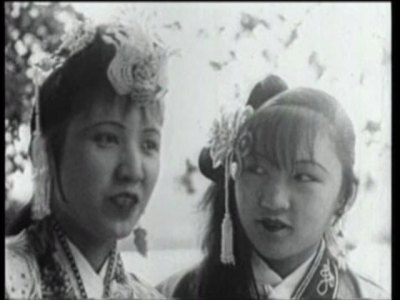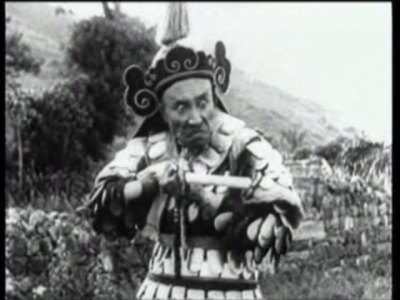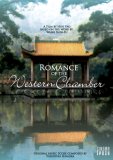| Reviews & Columns |
|
Reviews DVD TV on DVD Blu-ray 4K UHD International DVDs In Theaters Reviews by Studio Video Games Features Collector Series DVDs Easter Egg Database Interviews DVD Talk Radio Feature Articles Columns Anime Talk DVD Savant Horror DVDs The M.O.D. Squad Art House HD Talk Silent DVD
|
DVD Talk Forum |
|
|
| Resources |
|
DVD Price Search Customer Service #'s RCE Info Links |
|
Columns
|
|
|
Romance of the Western Chamber
 In ancient China, a young scholar named Chang Kung is on his way to the capital to take the imperial exam. He stops at a temple to rest and study for the night where he meets Ying Ying, the beautiful daughter of the late Prime Minister. He is immediately smitten by the young beauty, but he can do nothing about it since they are from different classes.
In ancient China, a young scholar named Chang Kung is on his way to the capital to take the imperial exam. He stops at a temple to rest and study for the night where he meets Ying Ying, the beautiful daughter of the late Prime Minister. He is immediately smitten by the young beauty, but he can do nothing about it since they are from different classes.
The bandit king Sung Fei Fu hears about Ying Ying's beauty too, and decides to have her for himself. He calls together his bandit horde and sets out to attack the temple. Once there he demands that the priests turn over the young girl or he will burn the temple to the ground.
Inside everyone is panicking. Madam Cui, Ying Ying's mother, proclaims that she will give Ying Ying's hand to whoever can defeat the bandit army. This is all Chang needs to hear. He hatches a plan that just might save all of their lives.
 This was an enjoyable movie, but more for the historical aspects than for the story itself. There were several scenes that, due to cultural differences, seem strange today. When Ying Ying's mother tells Chang to be sure to pass the imperial test he's been studying for, the young woman looks inexplicably sad. There are sections at the beginning with a monk staring at the young scholar that I watched a couple of times and still couldn't make out what the director was trying to say. The ending was also a little odd.
This was an enjoyable movie, but more for the historical aspects than for the story itself. There were several scenes that, due to cultural differences, seem strange today. When Ying Ying's mother tells Chang to be sure to pass the imperial test he's been studying for, the young woman looks inexplicably sad. There are sections at the beginning with a monk staring at the young scholar that I watched a couple of times and still couldn't make out what the director was trying to say. The ending was also a little odd.
There are only a few of these instances however, and the movie is generally very easy to follow. Of course, being only 42 minutes long, there's not any time for character development or even personalities to be revealed. Because of this the film doesn't hold much emotional impact, at least to these western eyes. It's hard not to think of how Mary Pickford would have played the role of Ying Ying, filling the young noblewoman with sympathy and warmth, as where in this film the actress makes the character aloof. (Which is a much more accurate portrayal, but it still makes it hard to understand why Chang falls for her.)
The most interesting aspect of this film is the battle scenes. While they don't have the polish that later Chinese films would have the way they depicted battles with swords and pikes worked well. For some of the large battle sequences images of groups of men fighting were superimposed over each other (most assuredly done in the camera). This was an effective and inexpensive way to create a feeling of chaos and confusion that these battles had. It worked very well. The section where a messenger leaves the temple and fights several guards with a bo staff was fun to view too. It didn't have the quick cutting and close-ups that would later make Kung-Fu movies so much fun to watch, but for the time it must have been impressive.
The DVD:
Audio:
This disc features an orchestral score composed by Toshiyuki Hiraoka. While this score was pleasant to listen to and was scene specific but didn't add much emotional impact to the film. The music for the action sequences weren't very energetic or rousing, and the rest of the score, while not quite bland, wasn't inspiring.
The intertitles were originally in French. At a later date Chinese script was superimposed under those. There are optional English subtitles too, which appear underneath the French and Chinese.
Video:
The full frame video was about average for an unrestored film from the 1920's. The image was soft, and the highlights were washed out in several places. The contrast was generally good however and there was a fair amount of detail. The beginning of the film has several missing frames some significant print damage, but this only last for a minute or two.
There are a couple of problems with the disc however. The framing is off a little, some of the image on the left side has been cut off. This means that some heads are cut off on that side and that people aren't centered in the frame as the director probably intended.
The film also looks like it is being shown too fast. People's movements, whether riding on horses or just walking about, seemed too rapid. During the fight scenes this is very noticeable and they seem almost comic, undoubtedly not the reaction the director was hoping for.
Extras:
There are no extras.
Final Thoughts:
This is a nice film, though the main appeal is historical rather than as entertainment. The style is a bit stilted but the action scenes were fun and worth watching. The print itself could have used some restoration but it is watchable. This would make a good rental.
|
| Popular Reviews |
| Sponsored Links |
|
|
| Sponsored Links |
|
|
| Release List | Reviews | Shop | Newsletter | Forum | DVD Giveaways | Blu-Ray | Advertise |
|
Copyright 2024 DVDTalk.com All Rights Reserved. Legal Info, Privacy Policy, Terms of Use,
Manage Preferences,
Your Privacy Choices | |||||||














